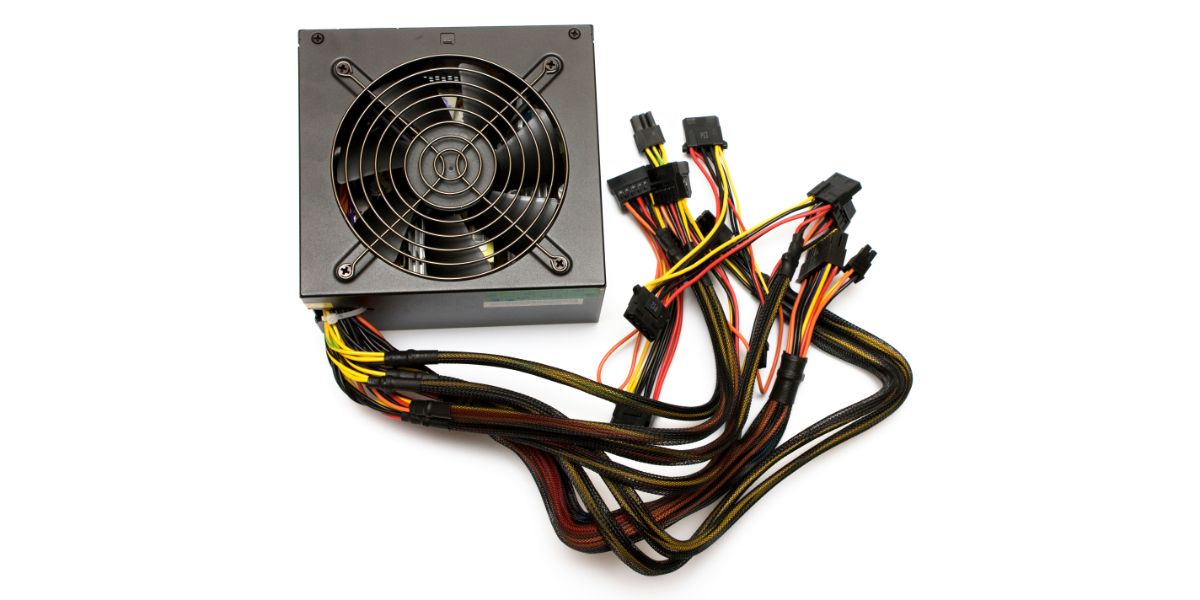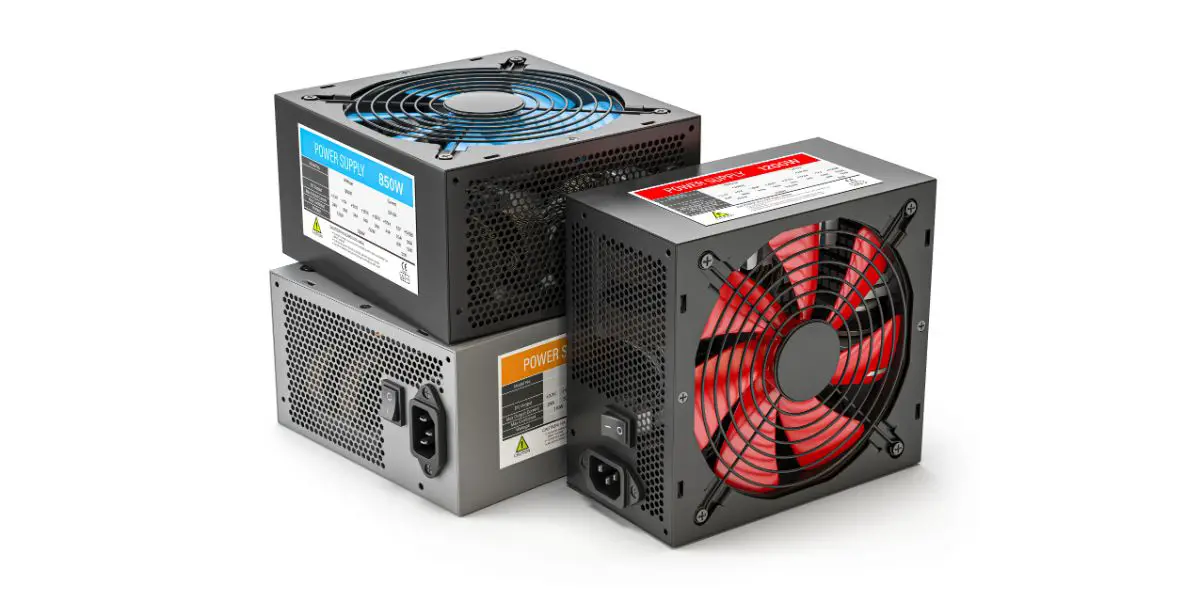Disclaimer: This post may contain affiliate links, meaning we get a small commission if you make a purchase through our links, at no cost to you. For more information, please visit our Disclaimer Page.
A Power Supply Unit or PSU is one of the most critical components in your computer. It’s usually rated for the maximum amount of power it can supply in watts. So, does this mean that it draws all this wattage all the time, even if your machine does not require so much power?
Table of Contents
Your Power Supply Gives You the Power You Need
Your power supply only delivers the power your system needs at any given time if it can deliver the necessary wattage. It does not draw this much power all the time.
The amount of power your PSU delivers will depend on the demands individual components make of it. In other words, the Wattage rating of a PSU suggests the maximum power it can make available to your computer, not the number of watts it does deliver.
If your system demands 300 W of energy, that’s how much power your PSU will deliver, whether it’s rated to supply a maximum of 500 W, 1000 W, or more.
Note that the wattage rating does not refer to the amount of power drawn. Importantly, this implies that a 500 W PSU may well draw more than 500 W of energy when used at full capacity.
PSUs draw more energy than they supply because they need to convert the Alternate Current (AC) electricity they are supplied with into Direct Current (DC). PSUs must then regulate the current before supplying this power to your computer’s components.
In the process, some energy is lost as heat. The larger the PSU, the more energy it draws and the more heat it produces when rated at the same efficiency. This excess energy draw is why most power supplies come with dedicated fans that help reduce heat to ensure energy efficiency in your systems.
Today, some of the most advanced power supply units have their own liquid cooling solutions to manage heat loss. These provide the most effective and quiet cooling to protect your computer from the excess heat that a power supply generates.
Its Efficiency Rating Effects How Much Power a PSU Draws
If you are concerned about the energy your system draws, you’ll also want to pay attention to its energy efficiency rating.
The energy rating of your PSU refers to the amount of energy it delivers to your system relative to the energy it draws. So a less efficient power supply will draw more energy to deliver the same amount of power as a more efficient unit.
Many PSUs today are rated using the 80 PLUS system.
The 80PLUS program is a voluntary certification program. Manufacturers do not have to comply with its standards but choose to do so to provide consumers with clear guidelines about the energy efficiency of the different products they produce.
The ratings imply that these PSUs deliver at least 80% of the energy they draw as electricity to your computer’s components. That is, less than 20% of the energy drawn is wasted as heat. The higher the rating, the more efficient the unit.
For instance, an 80 PLUS Bronze rating implies a PSU delivers 82% of the AC power it receives as DC power, losing only 18% of the energy on the way. So a 500 W PSU rated 80 PLUS Bronze will have to draw 610 W to deliver its promised maximum load of 500 W.
At the same time, an 80 PLUS Titanium rating implies a PSU delivers 90% of the AC power it draws. So a 500 W PSU rated 80 PLUS Titanium would need to draw only 555.55 W to deliver the same 500 W, an energy savings of over 50 watts over the 80 PLUS Bronze rated unit.
Silver, Gold, and Platinum-rated units have intermediate levels of energy efficiency.
Usually, more efficient units are also more expensive. So you will have to decide whether you want to save on electricity by paying more upfront for a more efficient power supply or not.
How Much Electricity Does It Take To Power Your Computer
If you don’t know how much power your computer needs, start by preparing a list of all the components that will go into it. Then, refer to the necessary product manuals to determine the amount of power each component will draw at maximum capacity.
Adding up these figures should give you your system’s maximum energy draw.
Here are some rough guidelines for the amount of energy consumed by the major components of your computer.
- Motherboard: 50-150 W
- CPU: 80-140 W
- GPU: 50-300 W
- Disks: 15-30 W each
It’s easy to see why the average computer can consume anywhere from 200 to 1200 W.
A budget machine with integrated graphics and a low-end processor may only use a few hundred watts at once. On the other hand, a souped-up workstation or gaming computer with a dual GPU setup can push the largest PSUs to capacity.
If you would rather not figure out all the numbers yourself, you can always run the details of which components are in your computer through an online power supply calculator. This calculator will usually give you a good idea of the energy needed to power your system.
These figures will give you a ballpark figure of the power rating you need in your power supply.
Always Get a Higher-Rated PSU Than You Need
If you’re buying a new PSU, it is always a good idea to get one rated for higher wattage than your current needs. You may choose to upgrade, replace, or add on more components in the future. It will help if the PSU you install has a little room for these later provisions.
Additionally, running a PSU at full capacity is usually not a good idea. At such thresholds, power supply units heat up and are less efficient. They are usually most efficient when used at 40-80% of their full capacity.
For these reasons, I recommend that once you’ve calculated the energy requirements for your current setup, you add 50-60% capacity to the final number to arrive at the wattage you need.
That is, suppose that entering the details of your components into a power supply calculator suggests that your machine will have a maximum energy draw of 450 W. Then you should ideally get a PSU rated between 650 W and 750 W.
The extra headroom will ensure your power supply runs efficiently. You will also have room leftover to add additional components should you choose to do so.
That said, there is no benefit to getting a much more powerful PSU than you need.
For instance, if your components only draw 300 W, getting a 1000 W power supply would be overkill unless you have a clear upgradation plan.
The extra money spent on such a PSU would be more effective if directed at a lower-powered but more efficient model instead.
Final Thoughts
A power supply does not always draw on all the wattage available to it. It only uses the power required by the different components that drive your system, including the energy needed to convert AC to DC power, and the energy lost as heat.


